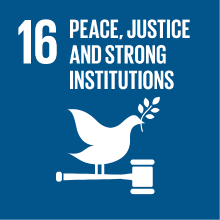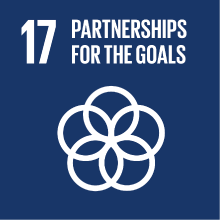BYZANTINE HISTORY
- Academic year
- 2025/2026 Syllabus of previous years
- Official course title
- STORIA BIZANTINA
- Course code
- FT0189 (AF:591328 AR:328570)
- Teaching language
- Italian
- Modality
- On campus classes
- ECTS credits
- 6
- Degree level
- Bachelor's Degree Programme
- Academic Discipline
- L-FIL-LET/07
- Period
- 1st Term
- Course year
- 3
- Where
- VENEZIA
Contribution of the course to the overall degree programme goals
This course serves as the natural continuation of Greek and Roman History and complements Medieval History courses, providing a broader and more in-depth perspective on the medieval period. Studying Byzantium allows for a reinterpretation of European history as a whole, both Western and Eastern, and a deeper understanding of the roots of their historical division.
Furthermore, Byzantine history is an integral part of the history of Venice and Italy, given the deep political, economic, and cultural ties between these regions and the Byzantine Empire. The course also examines Byzantium’s crucial role in the transmission of classical culture, highlighting the processes through which the Greek-Roman heritage was preserved and reinterpreted up to the modern era. Lastly, it introduces students to major contemporary historiographical debates, within a discipline that still offers vast areas of unexplored research.
Expected learning outcomes
At the end of the course, students acquire:
A) Knowledge and Understanding
-A thorough knowledge of the history of the Byzantine Empire and its main events, placing them within the broader context of medieval history.
-The ability to recognize and understand the influence and cultural legacy of Byzantium, assessing its impact on the political, religious, and artistic history of Europe and the Mediterranean.
B) Application Skills
-Competence in analyzing and critically interpreting a wide selection of historical sources, including primary sources (texts, documents, chronicles) and secondary literature.
-The ability to apply acquired knowledge to address historiographical problems, contextualize events, and establish connections between the past and the present.
C) Independent Thinking and Communication
-A critical and independent approach to evaluating sources and historiographical interpretations.
-The ability to construct clear and structured arguments, using academic language to present ideas, formulate theses, and engage in historiographical debates.
Pre-requirements
Contents
secret and ambiguous like this life,
Byzantium is a myth unfamiliar to me,
Byzantium is a dream that remains incomplete,
Byzantium perhaps never even existed...
(F. Guccini, Bisanzio, 1981)
--------------------------------------------------------------------
The History of Byzantium course introduces students to the history of the Eastern Roman Empire from 330 to 1453, providing an overview of its political, social, and cultural evolution. In addition to key historical events, the course explores aspects of Byzantine society, literature, and the empire’s legacy. Studying Byzantium allows for a deeper understanding of its role as a bridge between the ancient and medieval worlds, East and West, and examines its interactions with the Islamic world and Western European powers.
Topics covered include:
-The transition from Late Antiquity to the Middle Ages and the periodization of Byzantine history
-The political and military transformations of the Empire, from the founding of Constantinople to its fall in 1453
-The role of the Church and relations between imperial power and Byzantine Orthodoxy, from the Schism of 1054 to attempts at reconciliation with Rome
-The Byzantine society, administrative organization, and the economic system, with a special focus on Constantinople
-The transmission of classical knowledge, literary production, and Byzantine cultural influence on the Renaissance
-The Fourth Crusade and the Latin occupation of Constantinople (1204-1261), and its effects on Greek Orthodox identity
-The relationship between East and West in the Middle Ages, including political rivalries, cultural exchanges, and religious differences
Course Structure (30 hours, 5 weeks)
Week 1: Introduction and Methodologies
-Introduction to Byzantine History: Empire, Orthodoxy, and Hellenism
-Byzantine Studies: history of a discipline and its sources
-Sources for Byzantine History /1: chronicles, documents, epistolography, and historiography
Week 2: From the Birth of Byzantium to the 8th Century
-From Late Antiquity to Byzantium: transition from the Roman Empire to the Eastern Empire (330-527)
-Justinian and the Reconquest of the West: apogee and imperial crisis (527-565)
-The Resilient Empire: the rise of Islam, the crisis of the 7th century, and internal reforms (602-717)
Week 3: Church, Society, and Culture in Medieval Byzantium
-Sources for Byzantine History /2: theological texts, councils, hagiographies, and letters
-Empire and Church: the Iconoclast Controversy and the Triumph of Orthodoxy (843)
-The Macedonian Era: expansion, reforms, and cultural flourishing (867-1056)
Week 4: Crisis and Interaction with the West
-The 11th century and the Schism of 1054: tensions with Rome and the rise of the papacy
-The Komnenoi and the Crusades from a Byzantine perspective: relations with the Latins and the holy wars (1081-1204)
-The Latin occupation of Constantinople (1204-1261) and the reconstruction of the Empire
Week 5: Decline, Revival, and the Fall of the Empire
-1261-1453: the Palaiologos dynasty, civil wars, and relations with the Latin West
-Byzantine literature and culture: the transmission of classical knowledge and the Byzantine contribution to the Renaissance
-East and West in the Middle Ages: comparison of political, cultural, and religious models
Referral texts
The two best recent monographs, published by excellent scholars, are available only in English and are as follows:
Kaldellis, Anthony. The New Roman Empire: A History of Byzantium, Oxford University Press, Oxford, 2023.
Stathakopoulos, Dionysios. A Short History of the Byzantine Empire, Revised Edition, Bloomsbury Academic, London, 2023.
For students who wish to prepare for the exam using a text in Italian, they may use one or more of the following introductions:
Di Branco, Marco. Breve storia di Bisanzio, Carocci, Roma, 2016.
Ducellier, Alain e Kaplan, Michel. Bisanzio (IV-XV secolo), San Paolo Edizioni, Cinisello Balsamo, 2005.
Gallina, Mario. Bisanzio. Storia di un impero (secoli IV-XIII), Carocci, Roma, 2016.
Ravegnani, Giorgio. Introduzione alla storia bizantina, Il Mulino, Bologna, 2006.
Treadgold, Warren. Storia di Bisanzio, Il Mulino, Bologna, 2009.
For consultation and further reading, the following volumes are recommended:
Morrisson, Cécile (ed.). Il mondo bizantino. Volume I: L'Impero romano d'Oriente (330-641), edited by Silvia Ronchey and Tommaso Braccini, Einaudi, Torino, 2007.
Cheynet, Jean-Claude (ed.). Il mondo bizantino. Volume II: L'Impero bizantino (641-1204), edited by Silvia Ronchey and Tommaso Braccini, Einaudi, Torino, 2008.
Laiou, Angeliki and Morrisson, Cécile (eds.). Il mondo bizantino. Volume III: Bisanzio e i suoi vicini (1204-1453), edited by Silvia Ronchey and Tommaso Braccini, Einaudi, Torino, 2013.
Assessment methods
EACH STUDENT must submit a critical review of a monograph chosen from the list provided on Moodle 15 days before the exam date. The review must include a summary of the key points discussed by the author and a critical discussion of the text.
The review must be a maximum of 4 pages, font 12, single-spaced, with a total of approximately 3,000 words (including footnotes).
Key Steps of the Review
-Analysis of Content and Structure
-Identify the main theme of the monograph and its purpose.
-Summarize the key points of the author's argument.
-Examine the structure of the work: how are the chapters and sections organized?
-Critical Evaluation of Methodology and Sources
-Analyze the sources used: are they primary or secondary? Are they adequate and up to date?
-Assess the author's methodological approach: what tools and perspectives were adopted?
-Consider possible limitations or weaknesses in the argumentation.
-Contextualization and Bibliographical Comparison
-Place the monograph within the academic and historiographical debate of the time in which it was written.
-Compare the text with other readings from the course, highlighting similarities, differences, or later developments.
-Reflect on the impact of the work in the field of study: is it innovative? Does it confirm or challenge previous interpretations?
-Discussion and Overall Assessment
-Express a well-argued judgment on the effectiveness of the work and its relevance for understanding Byzantine history.
-Relate the content to other studies and academic debates.
The review should not be a mere summary but demonstrate critical analysis skills, connecting the text to other readings and historiographical debates discussed in the course.
Type of exam
Grading scale
The final grade will be determined by oral exam (70%) and critical review of a monograph (30%).
The oral exam will be assessed based on:
Clarity and effectiveness of oral expression
Ability to construct logical arguments based on sources
Level of independent analysis and critical thinking
The Critical Review will be evaluated according to:
Clarity and structure of the analysis
Ability to summarize and argue effectively
Critical use of sources and historiographical contextualization
Grading Scale
Sufficient (18-24/30) → The student demonstrates a basic understanding of the topic but with gaps. Arguments are elementary, and use of sources is marginal. Oral expression is inadequate for a formal exam, appearing unstructured or hesitant. Independent analysis is minimal.
Critical Review: predominantly descriptive, with a superficial summary and poor use of sources.
Fair (25-26/30) → The student demonstrates an adequate understanding, with a clear but occasionally uncertain presentation. Arguments are consistent but lack depth, and the use of sources is correct but not fully independent. Independent analysis is present but not always critical.
Critical Review: well-structured but with limited problematization and engagement with secondary literature.
Good (27-28/30) → The presentation is fluid and well-organized, with minor inaccuracies. Arguments are solid and supported by proper use of sources. The analysis is sound but could be more in-depth. Independent analysis is evident but not always original.
Critical Review: effective and well-argued, with an initial level of critical engagement and bibliographical comparison.
Very Good (29/30) → The presentation is confident and precise, with rare inaccuracies. The student constructs convincing arguments, demonstrating critical and independent use of sources. The analysis is complete but could benefit from deeper critical insight or originality.
Critical Review: well-written and supported by solid bibliographical references, with advanced critical analysis.
Excellent (30/30) → The presentation is rigorous, precise, and demonstrates mastery of disciplinary language. Arguments are well-structured and supported by sophisticated use of sources. The analysis is thorough and well-supported, though it could still be refined further.
Critical Review: solid and well-contextualized, with strong command of the historiographical debate.
Outstanding with Honors (30/30 with Distinction) → The performance is exceptional in every aspect. The presentation is impeccable, incisive, and perfectly structured. Arguments are highly sophisticated and original, with exemplary use of primary and secondary sources. The student demonstrates exceptional critical insight and innovative thinking.
Critical Review: outstanding, with innovative analysis and refined engagement with secondary literature.
Teaching methods
Students are expected to read and analyze the assigned primary and secondary sources before each session, as these will serve as the foundation for class discussions. Active participation is strongly encouraged, as it helps develop critical thinking skills and fosters a more nuanced understanding of the subject.
2030 Agenda for Sustainable Development Goals
This subject deals with topics related to the macro-area "International cooperation" and contributes to the achievement of one or more goals of U. N. Agenda for Sustainable Development


